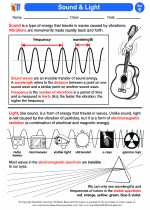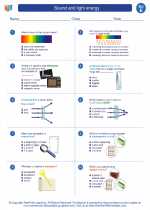Sound and light energy -> cellular structure
Cellular Structure
Cells are the basic building blocks of all living things. They have different structures that allow them to carry out specific functions. Let's explore the key components of cellular structure:
Cell Membrane
The cell membrane, also known as the plasma membrane, is a thin, flexible barrier that surrounds the cell. It controls the movement of substances in and out of the cell and provides protection and support.
Cytoplasm
The cytoplasm is a gel-like substance that fills the cell and surrounds the organelles. It contains various molecules, ions, and enzymes that are essential for cellular processes.
Nucleus
The nucleus is often referred to as the control center of the cell. It contains the cell's genetic material, DNA, which provides instructions for the cell's activities. The nucleus is enclosed by a nuclear membrane.
Organelles
Organelles are specialized structures within the cell that perform specific functions. Some important organelles include:
- Endoplasmic Reticulum (ER): Involved in the synthesis of proteins and lipids.
- Golgi Apparatus: Packages and distributes molecules produced by the cell.
- Mitochondria: Powerhouse of the cell, responsible for generating energy through cellular respiration.
- Chloroplasts (in plant cells): Site of photosynthesis, where sunlight is converted into chemical energy.
- Lysosomes: Contain digestive enzymes for breaking down waste materials.
- Ribosomes: Involved in protein synthesis.
Cell Wall (in plant cells)
Plant cells have an additional outer layer called the cell wall, which provides structural support and protection. It is composed of cellulose.
Study Tips
To effectively study cellular structure, consider the following tips:
- Review the function of each organelle and its role in cellular processes.
- Use diagrams and visual aids to understand the spatial organization of cellular structures.
- Practice identifying organelles under a microscope to develop observational skills.
- Explore online interactive resources and animations to visualize cellular structures and processes.
- Quiz yourself on the key components of cellular structure to reinforce your knowledge.
Understanding cellular structure is fundamental to comprehending the complexity and functionality of living organisms at the cellular level. Take the time to engage with the material and seek clarification on any concepts that may be challenging.
.◂Science Worksheets and Study Guides Fifth Grade. Sound and light energy

 Activity Lesson
Activity Lesson
 Worksheet/Answer key
Worksheet/Answer key
 Worksheet/Answer key
Worksheet/Answer key
 Worksheet/Answer key
Worksheet/Answer key
 Worksheet/Answer key
Worksheet/Answer key
 Vocabulary/Answer key
Vocabulary/Answer key
 Vocabulary/Answer key
Vocabulary/Answer key
